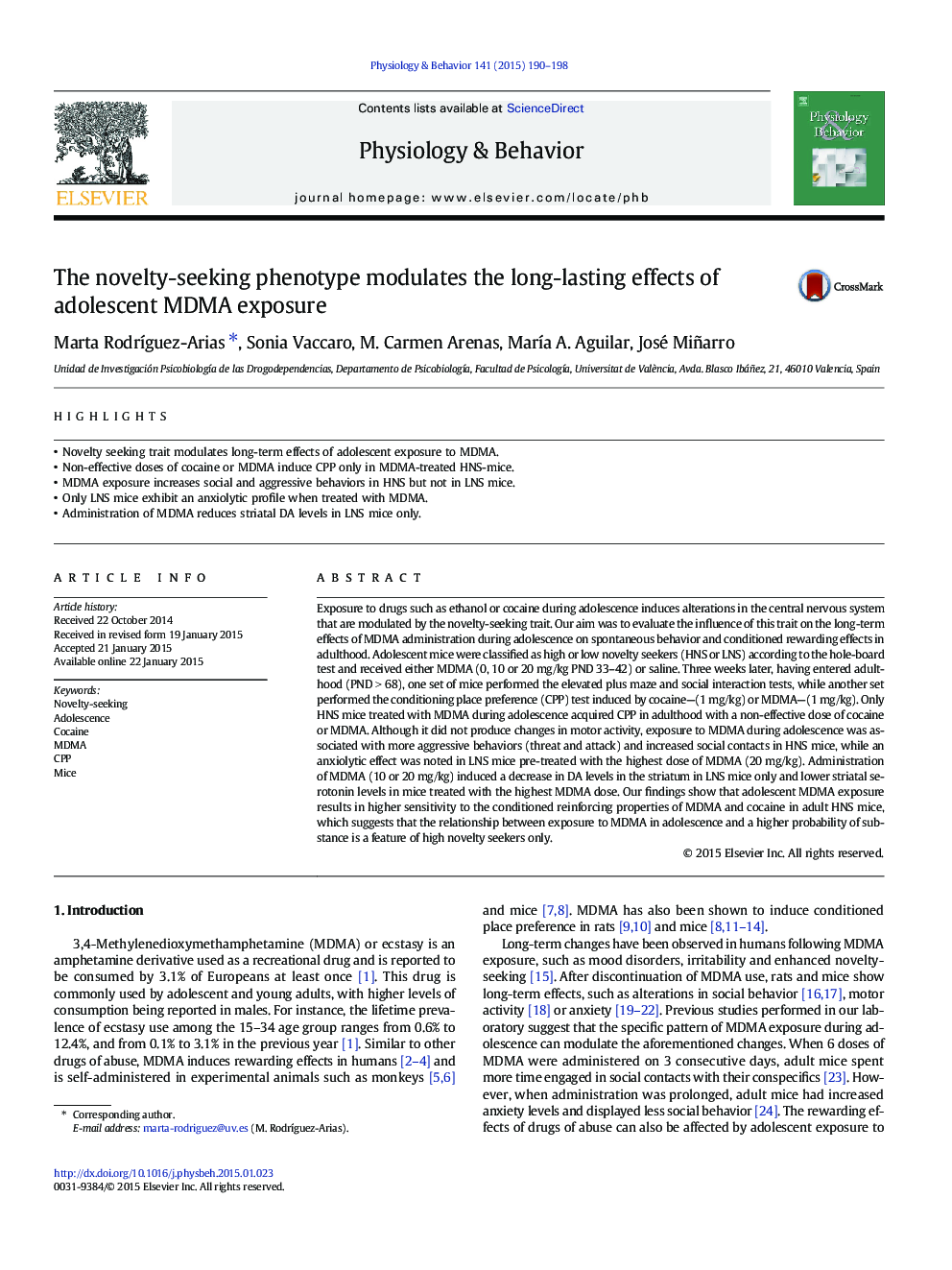| کد مقاله | کد نشریه | سال انتشار | مقاله انگلیسی | نسخه تمام متن |
|---|---|---|---|---|
| 5923788 | 1571176 | 2015 | 9 صفحه PDF | دانلود رایگان |

- Novelty seeking trait modulates long-term effects of adolescent exposure to MDMA.
- Non-effective doses of cocaine or MDMA induce CPP only in MDMA-treated HNS-mice.
- MDMA exposure increases social and aggressive behaviors in HNS but not in LNS mice.
- Only LNS mice exhibit an anxiolytic profile when treated with MDMA.
- Administration of MDMA reduces striatal DA levels in LNS mice only.
Exposure to drugs such as ethanol or cocaine during adolescence induces alterations in the central nervous system that are modulated by the novelty-seeking trait. Our aim was to evaluate the influence of this trait on the long-term effects of MDMA administration during adolescence on spontaneous behavior and conditioned rewarding effects in adulthood. Adolescent mice were classified as high or low novelty seekers (HNS or LNS) according to the hole-board test and received either MDMA (0, 10 or 20Â mg/kg PND 33-42) or saline. Three weeks later, having entered adulthood (PNDÂ >Â 68), one set of mice performed the elevated plus maze and social interaction tests, while another set performed the conditioning place preference (CPP) test induced by cocaine-(1Â mg/kg) or MDMA-(1Â mg/kg). Only HNS mice treated with MDMA during adolescence acquired CPP in adulthood with a non-effective dose of cocaine or MDMA. Although it did not produce changes in motor activity, exposure to MDMA during adolescence was associated with more aggressive behaviors (threat and attack) and increased social contacts in HNS mice, while an anxiolytic effect was noted in LNS mice pre-treated with the highest dose of MDMA (20Â mg/kg). Administration of MDMA (10 or 20Â mg/kg) induced a decrease in DA levels in the striatum in LNS mice only and lower striatal serotonin levels in mice treated with the highest MDMA dose. Our findings show that adolescent MDMA exposure results in higher sensitivity to the conditioned reinforcing properties of MDMA and cocaine in adult HNS mice, which suggests that the relationship between exposure to MDMA in adolescence and a higher probability of substance is a feature of high novelty seekers only.
Journal: Physiology & Behavior - Volume 141, 15 March 2015, Pages 190-198